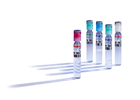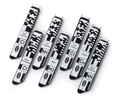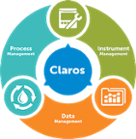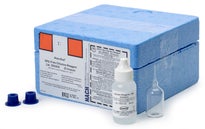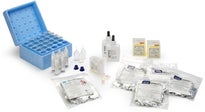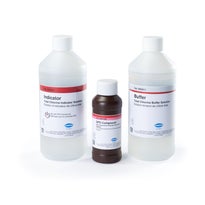-
Products
- Lab Instruments
-
Lab Meters and Probes
Calibration Standards Sension+ Meters and ProbesOther Meters and Probes Radiometer Probes
- Chemistries, Reagents, and Standards
-
Online Analyzers
Ammonium Analysers Ammonia Monochloramine Analyzers Chlorine Analyzers
- CL17sc
- CL10sc Amperometric
- 9184 sc Amperometric
- Ultra Low Range CL17sc Colorimetric Chlorine Analyser
EZ Series Analysers- Iron
- Aluminium
- Manganese
- Phosphate
- Chloride
- Cyanide
- Fluoride
- Sulphate
- Sulphide
- Arsenic
- Chromium
- Copper
- Nickel
- Zinc
- Ammonium
- Total Nitrogen
- Total Phosphorus
- Phenol
- Volatile Fatty Acids
- Alkalinity
- ATP
- Hardness
- Toxicity
- Sample Preconditioning
- Boron
- Colour
- Nitrate
- Nitrite
- Silica
- Hydrogen Peroxide
- EZ Series Reagents
- EZ Series Accessories
- EZ sc Series Inorganics
- EZ sc Series Metals
- EZ sc Series Nutrients
- Flow and Collections
-
Online Sensors and Controllers
pH & ORP Sensors
- 12mm pH/ORP
- 8362 sc High Purity
- Combination pH/ORP
- Differential pH
- Digital Differential ORP
- Digital Differential pH
- LCP ORP
- LCP pH
Conductivity Sensors- 3400 Analogue Contacting
- 3400 Digital Contacting
- 3700 Analogue Inductive
- 3700 Digital Inductive
- 9523 Cation Conductivity
- 9525 DCCP System
- Drinking Water Panels
- Dual Parameter Monitoring Panel
- Single Parameter Monitoring Panels
- Water Quality Monitoring Panel (WQMP)
- Automated Lab Systems
-
Multiparameter Online Panels
Single, Dual, Multi-parameter Online Panels
- Drinking Water Panels
- Dual Parameter Monitoring Panel
- Single Parameter Monitoring Panels
- Water Quality Monitoring Panel (WQMP)
- Claros Water Intelligence System
- Test Kits & Strips
-
Microbiology
Prepared Media
- BARTS
- Liquid MPN
- MUG Tube
- Membrane Filtration
- Paddle Testers
- Presence-Absence
- Total Count Media
- Yeast and Mold
Labware- Accessories
- Funnels, Pumps & Manifolds
- Microbiology Filters
- Petri Dishes & Accessories
- Sampling Bags
- Vials, Tubes, Bottles & Racks
-
Lab Equipment and Supply
ApparatusInstrumentsGeneral Lab Consumables Safety EquipmentBooks and Reference Material Glassware/Plasticware
- Samplers
-
Hach eLearning
Lab Product Training Process Product Training
- AN-ISE sc
- Amtax sc
- B3500
- B7000
- CL17sc
- Differential pH Sensor
- Filtrax Sample Filtration Systems
- LDO sc
- Nitratax sc
- Orbisphere 6110
- Phosphax sc
- SC1000
- SC200
- SC4500
- Solitax sc
- TU5300sc/TU5400sc
- Electrochemistry
- Parameters
- Software Solutions
- Industries
- Support
- News & Events
Hach Canada
Choose your country or region:
Europe
Americas
Asia - Australasia
- Australia
- Mainland China
- India
- Indonesia
- Japan
- Malaysia
- New Zealand
- Philippines
- Singapore
- South Korea
- Thailand (Thai)
- Taiwan
- Vietnam
Middle East - Africa
Chlorine
What is Chlorine?
Chlorine is a chemical element with atomic number of 17 and molecular mass of 35.5. Naturally occurring, it is found in the mineral form of sodium chloride (common salt) and other salts. Man-made chlorine is commercially manufactured through the electrolysis of sodium chloride solution.
Free Chlorine
Free chlorine, when used for disinfection, forms when chlorine gas is dissolved in water. Two chemical species (both are strong disinfectants) can form depending on pH:
- Hypochlorous acid (HOCl).
- Hypochlorite ion (OCl -).
Chlorination
Chlorination is the water treatment and disinfection process that uses free chlorine. Chlorination is the common disinfection method used for source water with minimal organic contamination and low concentrations of difficult-to-treat microorganisms, like giardia or cryptosporidium.
It is also used for taste and odor control, prevention of algal growths, maintaining clear filter media, removal of iron and manganese, destruction of hydrogen sulfide, cyanide and improving coagulation.
Chloramine (Combined Chlorine)
Chloramines form when chlorine is added to water containing ammonia. Chlorine reaction with ammonia can be wanted or unwanted based on the water treatment strategy. Depending on how many hydrogen atoms in ammonia molecules are substituted with chlorine atoms, three different chloramine species can form:
- Monochloramine
- Dichloramine
- Nitrogen Trichloride
Chloramination
Chloramination is a water treatment and disinfection process that uses monochloramine as target disinfectant. Chloramines have lower reactivity compared to free chlorine and they react less intensely with various impurities in raw water, particularly organic substances. This results in the formation of fewer carcinogenic disinfection by-products (DBP) primarily trihalomethanes (THMs). This is one of the most important factors contributing to the demand for replacing free chlorination with chloramination.
Also, because of reduced oxidizing power, chloramines create a substantially smaller disinfectant demand, which significantly reduces chlorine consumption to maintain a desired total chlorine residual in the water, which lowers the treatment cost.
Total Chlorine
Total chlorine is the sum of all free and combined chlorine species present in the sample. Methods for measuring chlorine can be specific for free chlorine (hypochlorous acid and hypochlorite) or combined chlorine (chloramines and chloro-organics).
Why Measure Chlorine?
A strong oxidizing agent, chlorine (Cl 2), is an ideal disinfectant. Proper residual chlorine levels in drinking water ensure that water is safe for human consumption, but too much chlorine in water can have detrimental effects in pharmaceutical production, membrane treatment processes and other applications. Excess residual chlorine can cause environmental harm and harm organoleptic properties of tap water.
When added to water, chlorine reacts to form free chlorine or chloramines (when ammonia is present), which:
- act as potent germicides.
- oxidize metals allowing them to be removed.
- reduce many disagreeable tastes and odors.
At Hach ®, find chlorine test kits, instrumentation, reagents, training and software you need to successfully monitor and manage chlorine levels in your specific applications.
Featured Products for Monitoring Chlorine
With a variety of options to choose from, Hach has the Disinfection Analyzers you need for your unique application.
Shop NowHach’s easy to use, robust, portable DR300 and DR900 instruments are built to handle the unique stresses present in the field.
Shop NowHach has been innovating with spectrophotometry for over 70 years and offers many of the leading spectrophotometers in the water analysis market.
Shop NowSL1000 Portable Parallel Analyser (PPA)
The Hach SL1000 Portable Parallel Analyzer (PPA) performs the same tests with less than half the manual steps.
Shop NowFree & Total Chlorine Reagents
Hach is dedicated to providing high-quality reagents for routine and challenging water analysis.
Shop NowHach is dedicated to providing high-quality reagents for routine and challenging water analysis.
Shop NowHach is dedicated to providing high-quality reagents for routine and challenging water analysis.
Shop Now
The Chemistry of Chlorine Disinfection Strategies
Chlorine demand is the total amount of chlorine that is needed to react with all the contaminants in the water such as metals, bacteria, organics or ammonia. As free chlorine is added and reacts with contaminants, it will be used up. When demand is overcome, free chlorine becomes measurable. Therefore, chlorine demand is the difference between the amount of chlorine added to water and the measurable chlorine residual remaining after reaction.
Understanding chlorine demand helps ensure effective disinfection throughout the water treatment process. Breakpoint chlorination is the application of enough chlorine to maintain a free chlorine residual.
Risks Associated with the Improper Handling of Residual Chlorine
- Health - Chlorine must be removed from the water used for dialysis to prevent patients from other health issues, including cardiac arrest.
- Environmental - Even at low levels, chlorine can cause environmental harm, especially to organisms living in water and soil.
- Structures - Chlorides that may form due to the use of chlorinated water can cause stress cracks in stainless steel, potentially compromising equipment and structures.
- Pharmaceutical - Chlorine can damage active pharmaceutical agents during production, resulting in poor product quality or product loss.
- Water Treatment Equipment - In water treatment systems, chlorine can degrade reverse osmosis membranes and ion exchange resins.
Dechlorination Methods
Since chlorine can be detrimental, there are applications that require "dechlorination." Adsorption dechlorination uses activated carbon to remove chlorine compounds. Chemical dechlorination uses reducing agents such as sulfites, bisulfites or metabisulfites to destroy chlorine species.
Which Processes Require the Monitoring Chlorine?
Drinking Water Treatment and Distribution
During pre-oxidation, source water entering a plant is dosed with chlorine (pre-chlorination) to precipitate out minerals as a primary treatment step (besides disinfection) to help with suspended and dissolved matter removal before filtration. The water is then filtered to improve clarity and chlorinated again.
For chlorine to be effective, its concentration before and after filtration (as well as pH, water temperature, and contact time) must be monitored and controlled. Most treatment plants have a contact chamber (clear well) where chlorine is injected, mixed and allowed to remain in contact with the water for the required time dependent on the temperature, pH and type of microorganisms present in the water. The contact time provides a chlorine residual, intended to maintain water sanitized as it enters storage tanks and travels throughout the distribution system.
All chlorination before (pre-chlorination) and after filters (post-chlorination) is controlled at multiple points throughout the treatment process and in the distribution system. Additional booster chlorination of tap water in the network is usually conducted at pump/booster stations and must be thoroughly monitored and controlled.
It is essential to monitor chlorine levels in the distribution system to ensure that the proper level of chlorine residual is maintained to meet regulatory standards for disinfection, and to ensure that there is no excessive chlorine present.
Advantages of Using Chlorine to Disinfect Drinking Water
- Chlorine eliminates slime bacteria, molds and algae that commonly grow in water supply reservoirs, on the walls of water mains, and in storage tanks.
- Chlorine is a potent germicide, reducing the level of many disease-causing microorganisms in drinking water to regulatory appropriate levels.
- Chlorine helps remove dissolved iron and manganese from raw water.
- Chlorine reduces many disagreeable tastes and odors by:
- oxidizing natural organics such a foul-smelling algae secretion, sulfides, and odors from decaying vegetations.
- destroying hydrogen sulfide, which has a rotten egg smell.
- removing ammonia and other nitrogenous compounds that may cause unpleasant tastes.
Disadvantages of Using Chlorine to Disinfect Drinking Water
- Chlorine is not effective against cryptosporidium, a life-threatening parasite.
- During chlorination, unwanted ammonia can react with chlorine to form chloramines that lower the disinfection potential and may create taste/odor issues when not monitored and controlled efficiently.
- When reacting with organics in water, chlorine can form disinfection by-products ( DBP) that are considered harmful to human health. Due to these risks, there are regulations that limit levels of DBP as well as chlorine residual concentrations in drinking water.

Wastewater Treatment
Chlorination is used in the final stages of treatment to kill pathogens, as well as the microorganisms used in previous treatment stages to prevent the spread of waterborne diseases. To reduce the toxicity of the effluent, dechlorination is used to manage chlorine residuals and ensure compliance with regulations before effluent waters are discharged into lakes, rivers or the ocean. Chlorine is used to oxidize cyanides, which are amenable to chlorination.
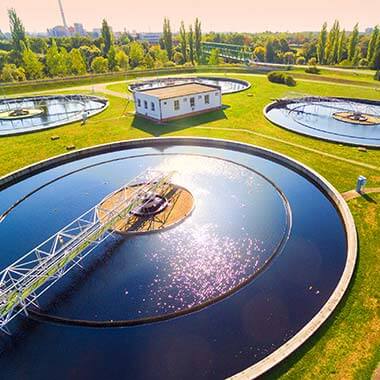
Industrial Cooling Towers
Chlorine levels must be monitored and controlled because if chlorine levels are too low, biogrowth can prevail and clog the water systems. However, if chlorine levels are too high, corrosion or other damage may occur.
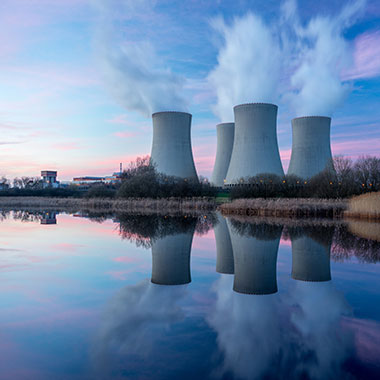
Food Processing
Chlorine is often used as a sanitizing agent for fruits, vegetables, poultry and meats. Maintaining proper chlorine residuals is essential for optimizing the sanitizing power of rinse water. The recirculated water used for the rinse bath during pasteurization at the end of the packing process, accumulates contaminants. Therefore, it is necessary to maintain a chlorine residual to sanitize the water.
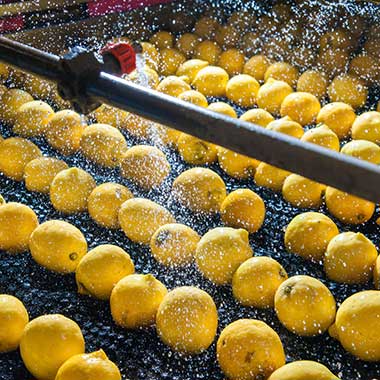
Clean-In-Place (CIP) Processes Used in Food, Beverage and Pharmaceutical Industries
Piping and vessels used in industrial processes are periodically cleaned and sanitized in a procedure called Clean-In-Place (CIP). Chlorine must be monitored to ensure that appropriate levels exist in the CIP solution for disinfection and to prevent contamination of products due to either lack or excess of chlorine.
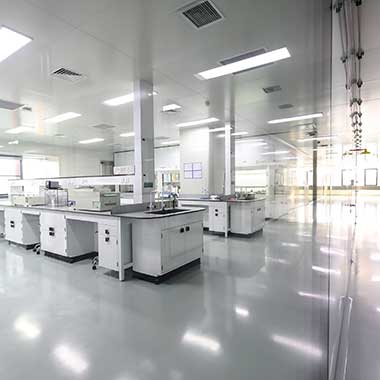
How is Chlorine Monitored?
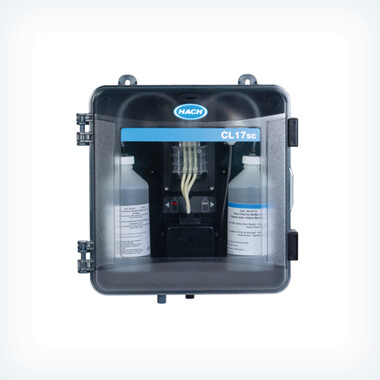
Colorimetry
In general, this optical method uses color intensity measurements to determine the concentration of chlorine in a solution. When appropriate buffer and indicator solutions are added to the sample, a reaction occurs producing a color, which intensity is proportional to the chlorine concentration. The color intensity is measured by eye, colorimeter or spectrophotometer. This method is susceptible to interference from color and turbidity in the sample, as well as some chemical substances besides chlorine, concurrently reacting with the indicator.
DPD Method
DPD method is the most widely used colorimetric method to measure chlorine. It can be used to measure both free and total chlorine with field, lab and online instrumentation. However, DPD method is subject to interference from other oxidants such as manganese, chromium and chloramines.
Indophenol Method
Indophenol method, being selective to monochloramine, can be used to measure monochloramine and free ammonia as well as free chlorine. Monochloramine is determined directly, while for determination of both monochloramine and free ammonia in the same sample method uses additional reagent to convert free ammonia into monochloramine. Free chlorine can also be measured by the indophenol method using a two-reagent system that is not subject to the interferences that affect the DPD method. However, this method is only available for the laboratory or field analyses and not for online analyzers.

Titration
This method determines chlorine concentration based on a completion of chemical reaction between the chlorine and titrant added to the sample. The titrant is added incrementally until the reaction is complete. The endpoint (or equivalence point) is the point at which the titrant and chlorine are balanced. The equivalence point can be determined visually using a color indicator or by using an electrochemical sensor. Manual, visual measurements are less precise and more susceptible to interference from color or turbidity in the sample, while titration using electrodes is more accurate and not susceptible to those interferences.
DPD-FEAS Method
DPD-FEAS method uses a magenta visual indicator that is titrated to a colorless endpoint. This method measures free and total chlorine.
Iodometric Method
Iodometric method uses a blue visual indicator that disappears at the titration endpoint. This method is typically used to measure high concentrations of total chlorine.
Amperometric
This method represents amperometric titration to determine the endpoint either manually, or automatically. A small voltage is applied to the electrode and the endpoint is determined by a change in current, resulting from the reduction of chlorine by the titrant (phenylarsine oxide). The change in current and the volume of titrant are measured to correspond to the concentration of the chlorine. This method offers procedures for measuring both free and total chlorine, chlorine dioxide and chlorite, while using forward and back titration procedures.
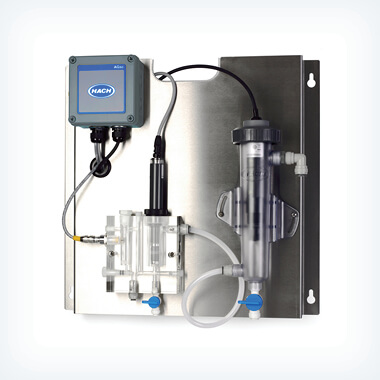
Online Amperometry
This electrochemical method measures the change in electrical current resulting from chemical reactions taking place at the electrodes, with the current being proportional to the chlorine concentration. Different amperometric sensor designs are available, providing better selectivity for different chlorine species. This method is not susceptible to interference from color or turbidity in the sample, however, the sensor surface exposed to the sample is prone to fouling. Some amperometric analyzers do not require reagents. Amperometric sensors require maintenance and must be calibrated in-situ at a frequency dependent on the application.
Frequently Asked Questions
What is monochloramine and how is it used in water disinfection?
Monochloramine is a disinfectant that is commonly used as an alternative to free chlorine for disinfecting drinking water, mostly because monochloramine forms less DBP than free chlorine.
The term chloramines, as used in the water industry, describes the three main compounds that can be formed from the reaction of ammonia with chlorine: monochloramine, dichloramine and trichloramine. While monochloramine is the target disinfectant, the other unwanted compounds can be found in water when chloramination is not adequately controlled, in chlorinated ground water systems containing natural ammonia, and in chlorinated wastewater effluents. It is important to note that chloramines refer to a group of compounds and not a single substance. A more technical description for this group would be “inorganic chloramines” to distinguish them from the organic chloramines that provide low to no disinfecting power. It is generally understood that the chloramines form sequentially, e.g. first monochloramine, then dichloramine, and finally trichloramine when chlorine is continually added to the water containing ammonia. However, this process is reversed when ammonia is added to chlorinated water. Chloramination process is very complex and requires significantly more involved monitoring for efficient control.
The goal of chloramination is a complete formation of monochloramine with avoidance of other chloramines. The 5:1 Cl 2:N mass ratio is found to be an optimal chemical feed proportion, avoiding dichloramine formation (taste and odor problems), minimizing un-reacted ammonia and controlling biofilm and nitrification downstream.
What would cause positive results using DPD when no chlorine is present in the sample?
Other oxidants such as bromine, iodine, ozone, chlorine dioxide and some metals or hydrogen peroxide can react with DPD in various circumstances and cause false positives. The most common interference is by oxidized manganese, which can be corrected by treating the sample with potassium iodide and sodium arsenite. Sunlight can react with the DPD indicator during the 3-minute reaction time for total chlorine (keep the sample covered during the reaction time if testing outdoors).
At the low ranges of chlorine, dissolved oxygen may provide interference especially in direct sunlight. If the ultra-low range (ULR) method is utilized on a colorimeter or a spectrophotometer, confirm that a reagent blank using deionized water has been determined and subtracted from the results of analyzing the sample. It is also a good idea to use the same sample cell for zeroing the instrument and reading the sample concentration. This avoids any effects that might be due only to optical differences between the zero and read cell.
When is the free chlorine indophenol reagent recommended over the free chlorine DPD reagent?
There are several reasons to utilize the free chlorine indophenol chemistry used in Hach method 10241 over DPD chemistry:
- Determination of residual free chlorine levels in the presence of manganese and other oxidants, which interfere with DPD colorimetric and both DPD and amperometric titration methods for free chlorine. Use in potable water, chlorinated drinking water, swimming pool water and treated wastewater effluent.
- Determination of free chlorine in the presence of chloramines (free chlorine should be prevalent in the water sample). Chloramines react with DPD free chlorine indicator. Their presence will cause the color developed to be unstable and slowly increase over time. The rate of interference is dependent upon the concentration of chloramines, their structure, pH and temperature of the sample, which makes it difficult to predict the level of interference to the actual free chlorine value.
The indophenol method for free chlorine uses freechlor F reagent solution to rapidly convert the free chlorine present in the sample into monochloramine. The formed monochloramine is then determined with monochlor F reagent, which is specific for monochloramine. Manganese, other chloramines, and chlorinated organic amines do not react with the monochlor F reagent and therefore, do not interfere in the free chlorine determination. A monochlor F sample blank is used to compensate for any monochloramine present in the original sample.
When should total chlorine be measured?
Total chlorine is typically measured in systems using chloramination when chlorine is intentionally reacted with ammonia. Total chlorine is the sum of free chlorine and inorganic chloramines. If the chlorine levels are to be reported to a regulatory agency, it would be recommended to confirm which form of chlorine (free or total) to measure and which methodology to utilize for analysis.
When should free chlorine be measured?
Free chlorine is typically measured in drinking water systems using chlorine gas or sodium hypochlorite for disinfection to find whether the water contains enough disinfectant. Typical levels of free chlorine residual in drinking water are 0.2-2.0 mg/L Cl 2, though levels can be as high as 4.0 mg/L at the point of entry (POE). If the chlorine levels are to be reported to a regulatory agency, it would be recommended to confirm which form of chlorine (free or total) to measure and which methodology to utilize for analysis.



 Recurring Orders
Recurring Orders 
